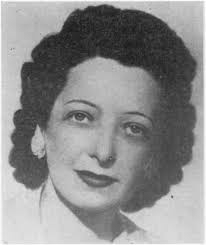Sulner, Hanna Fischhof (February 17, 1917– January 5, 1999)
Sulner, Hanna (1917–1999)
Sulner, Hanna (1917–1999)
Hungarian document analyst and handwriting expert. Born Hanna Fischhof in Budapest, Hungary, February 17, 1917; died in New York City on January 5, 1999; daughter of Professor Julius Fischhof (a handwriting analyst); studied criminology, earned special degree to teach document examination; married Laszlo Sulner (a handwriting analyst), in November 1947 (died 1950); children: one son, Andrew (a document expert).
Studied handwriting analysis with father from age 16; took over father's handwriting analysis work (1944); drawn into Communist government plot to frame Cardinal Jozsèf Mindszenty (c. 1947); denounced trial after escaping to Vienna (1949); published Disputed Documents (1966).
One of the world's leading authorities in the field of document examination, Hanna Sulner spent her life analyzing and authenticating documents, many of them at issue in important legal cases. She was born Hanna Fischof around 1918 in Budapest, Hungary, where her father, Professor Julius Fischof, an expert on handwriting and document analysis, settled after World War I. Hanna began working and studying with him when she was 16 years old. She also studied criminology and obtained a special degree that qualified her to teach document examination at the University of Budapest school of law. When her father died in 1944, she took over his work and professional position as the official handwriting and documentation expert for the Hungarian courts, police, and military. Known as a meticulous professional, she soon inherited his reputation as well.
Laszlo Sulner joined the office in 1946, and the two were married the following year. Gradually, without at first being aware of it, the couple became a party to the plot to discredit Cardinal Jozsèf Mindszenty. The cardinal was a fervent anti-Communist and staunch enemy of the Soviet-backed Hungarian government's Communist police state. As primate of the largely Roman Catholic country, however, he was a highly influential personality and much respected, and so could not be summarily jailed or executed as many others were. The government's solution was an elaborate frame-up that included falsified documents proving, among other charges, treason.
Laszlo forged the majority of the documents purported to be either written or signed by the cardinal, but Hanna was also fully involved; their cooperation came under the threat of death, and they felt they had no choice. In 1949, Mindszenty was convicted of treason during a three-day trial in which the documents forged by the Sulners and by police who had been trained by Laszlo were prime evidence. As the trial was drawing to a close, the Sulners escaped to Austria on February 6, 1949. Four days later in Vienna, they publicly denounced the trial as a fraud and displayed microfilm of the forged documents on which they had worked.
The next year, Laszlo died in Paris at age 30. The cause was listed as heart disease, but Hanna insisted that he had been poisoned by Communist agents. She fled to the United States with her infant son, and resumed her career in New York City. Sulner was a much sought-after expert witness, and was well known for being unusually particular about the quality of photocopies made of documents she was asked to examine, insisting on the help of her own expert assistants. She published many articles about document analysis and a 1966 handbook, considered to be authoritative, titled Disputed Documents.
sources:
"Hanna F. Sulner, 81, Expert Drawn into Mindszenty Plot," in The New York Times. January 19, 1999.
Malinda Mayer , writer and editor, Falmouth, Massachusetts

 Amanda S. Stevenson
Amanda S. Stevenson 